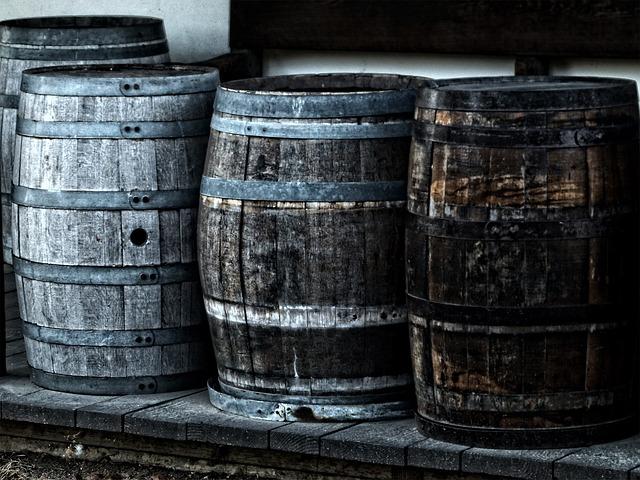In the hustle and bustle of modern life, where time is a luxury and meals are often hurried, leftovers become the unsung heroes of our kitchens. They offer a second chance to savor yesterday’s culinary triumphs and provide a convenient solution for the next meal. However, ensuring that these remnants of deliciousness retain their nutritional value while staying safe for consumption requires more than just a casual toss into the refrigerator. This article embarks on a journey through the art and science of storing leftovers, unveiling the secrets to preserving their healthful essence. Join us as we explore practical tips and techniques that transform leftover storage from a mundane task into a mindful practice, ensuring that every bite remains as nourishing as it is delightful.
Choosing the Right Containers for Optimal Freshness
When it comes to preserving the nutritional value of your leftovers, selecting the right containers is crucial. Glass containers are an excellent choice for those who are health-conscious and environmentally aware. They are non-reactive, ensuring that no unwanted chemicals leach into your food, and are perfect for both hot and cold items. Stainless steel containers offer a durable and lightweight alternative, ideal for those who prefer a more robust option. They maintain temperature well and are often more resistant to wear and tear.
For those who prioritize convenience, silicone bags provide a flexible and space-saving solution. They are perfect for liquids and semi-solid leftovers, easily fitting into any fridge or freezer nook. Consider using BPA-free plastic containers for a budget-friendly option, ensuring they are microwave and dishwasher safe to maintain ease of use. Regardless of your choice, always ensure that the lids fit securely to keep air and moisture out, preserving the freshness and flavor of your meals. A well-sealed container is your best ally in maintaining the integrity of your culinary creations.

Temperature Control and Its Impact on Nutrient Retention
Maintaining the optimal temperature is crucial for preserving the nutritional integrity of leftovers. Cold storage is your first line of defense against nutrient loss. When storing cooked meals, ensure they are cooled rapidly and stored at a temperature below 40°F (4°C) to slow down the growth of harmful bacteria and prevent nutrient degradation. Heat-sensitive vitamins, like vitamin C and some B vitamins, are particularly vulnerable to high temperatures and prolonged exposure to air. By sealing leftovers in airtight containers, you can help reduce oxidation and preserve their vitamin content.
Reheating is another critical stage that can affect nutrient retention. When warming up leftovers, aim for a gentle reheating process. Avoid using high temperatures that can destroy delicate nutrients. Consider these tips to retain the nutritional value:
- Use a microwave with a lower power setting or employ steaming methods to evenly heat your food.
- Stir the food midway through reheating to ensure even temperature distribution.
- Reheat only the portion you plan to consume to avoid repeated heating cycles, which can further deplete nutrients.
By paying attention to both storage and reheating practices, you can enjoy leftovers that are not only safe but also rich in the nutrients your body needs.

Understanding Shelf Life to Prevent Nutrient Loss
Grasping the concept of shelf life is essential to ensure that your leftovers retain their maximum nutritional value. The shelf life of food is influenced by factors such as temperature, humidity, and exposure to light and air. Proper storage is key to preventing nutrient degradation. Here are some quick tips:
- Refrigerate promptly: Store leftovers in the refrigerator within two hours of cooking to slow down bacterial growth and nutrient loss.
- Use airtight containers: This minimizes exposure to air and moisture, both of which can speed up the deterioration of nutrients.
- Label and date: Always mark your containers with the date they were stored. This helps in keeping track of how long they’ve been kept, ensuring that you consume them while they’re still fresh.
Understanding these principles allows you to manage your leftovers effectively, keeping them both safe and nutritious for future meals. This knowledge not only helps in reducing food waste but also ensures that you continue to reap the health benefits of your meals long after they’ve been cooked.
Best Practices for Reheating Without Compromising Nutrition
Reheating leftovers can be a delicate task, especially if you want to preserve their nutritional integrity. Here are some best practices to ensure your meals remain both delicious and nutritious. First, avoid using the microwave as your default method. While convenient, microwaving can unevenly heat food, leading to potential nutrient loss. Instead, consider using a steamer or oven to gently warm your dishes. These methods distribute heat more evenly and help maintain the texture and nutrients of your food.
Another tip is to add a splash of water, broth, or a healthy oil when reheating, especially for items like grains or vegetables. This helps prevent them from drying out and can enhance the absorption of fat-soluble vitamins. Also, be mindful of reheating only the amount you plan to eat. Repeated heating and cooling cycles can further degrade nutrients and affect food safety. By following these guidelines, you can enjoy your leftovers without sacrificing their health benefits.
To Wrap It Up
As we conclude our exploration into the art of preserving the nutritional integrity of leftovers, it’s clear that a little knowledge goes a long way in ensuring our meals remain both safe and nourishing. By embracing the simple yet effective practices of proper storage, timely consumption, and mindful reheating, we not only safeguard our health but also honor the effort and resources that went into preparing our food. Whether it’s a hearty stew from Sunday dinner or a vibrant salad from a midweek lunch, each dish holds the potential to nourish us once more. So, let us approach our leftovers not as remnants of meals past, but as opportunities to savor and sustain. With these strategies in hand, you can confidently navigate your culinary landscape, turning yesterday’s dishes into tomorrow’s delights. Here’s to eating well, waste less, and cherishing every bite.
